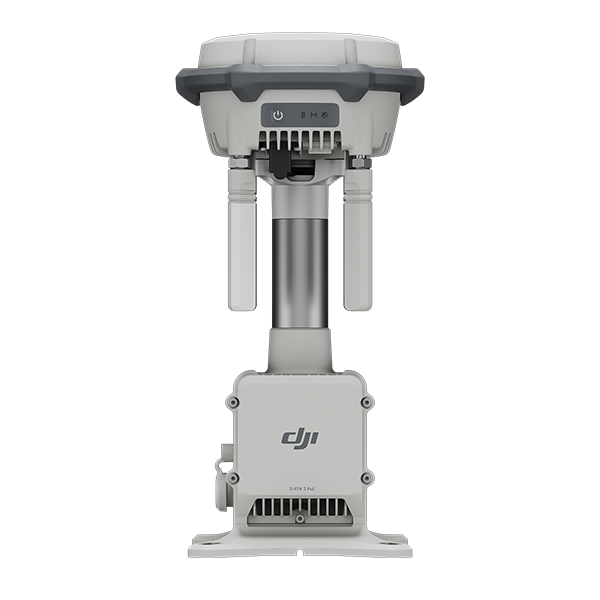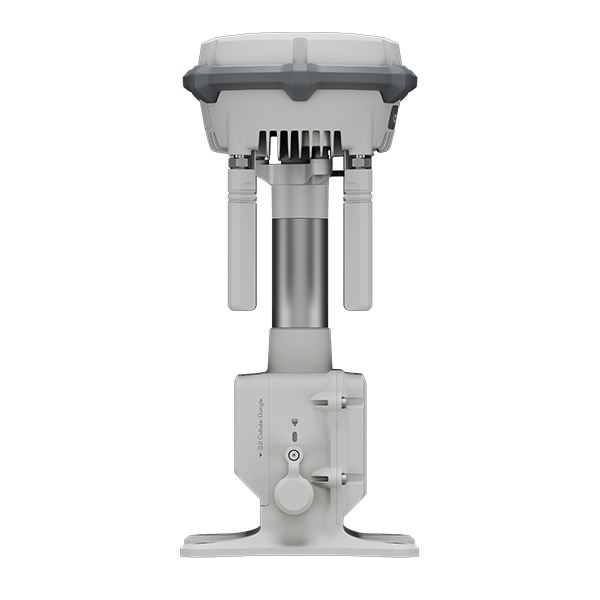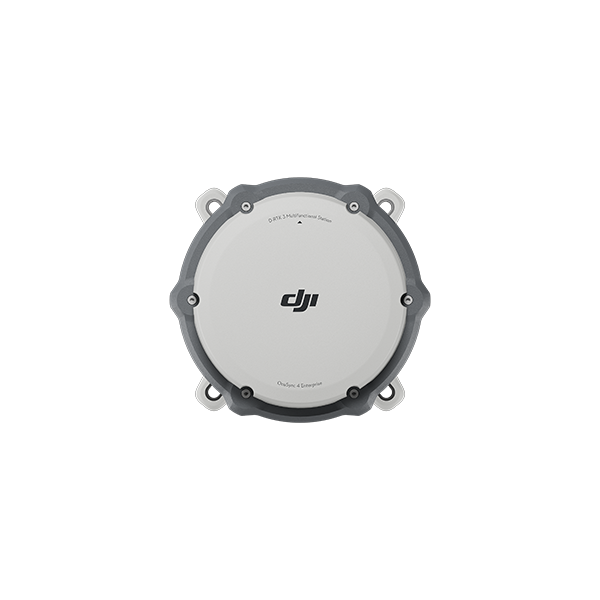











The DJI D-RTK 3 Relay Fixed Deployment Version is an essential component for enhancing the accuracy, range, and reliability of autonomous drone missions executed via DJI Dock 3. Designed specifically to support fixed, long-range, and elevated deployments, this upgraded RTK station combines centimeter-level GNSS positioning with relay signal capability, ensuring optimal transmission conditions and seamless docking workflows.
This powerful and compact ground-based solution is ideal for industrial use cases such as infrastructure inspection, border surveillance, disaster response, energy sector monitoring, and 24/7 remote drone operations. By integrating it into your DJI Dock 3 system, operators benefit from a reliable, redundant, and efficient RTK solution that supports consistent drone takeoffs and landings—day or night, rain or shine.
At the core of the D-RTK 3 Relay system is DJI’s advanced multi-frequency GNSS module, supporting GPS, GLONASS, Galileo, and BeiDou. The fixed deployment version is engineered to deliver centimeter-level positioning accuracy, even in complex terrain or challenging GNSS environments.
With this relay deployed at an optimal elevation, it effectively reduces GNSS errors, supports real-time corrections, and improves drone stability—essential for autonomous operations requiring pinpoint positioning.
Unlike traditional GNSS base stations, the D-RTK 3 Relay Fixed Deployment Version includes an integrated signal relay function, enabling robust communication between the drone, the dock, and the control center—even when line-of-sight is partially obstructed or when deploying across large sites.
By acting as a relay hub, it extends video transmission range and minimizes the need for a direct connection between the operator and the aircraft. This is especially valuable in large-scale industrial sites, construction zones, and remote deployments, where signal strength and reliability are mission-critical.
The D-RTK 3 Relay was purpose-built to complement DJI Dock 3, enabling the Matrice 4 Series drones (like the DJI M4D and DJI M4TD) to perform precision landing and autonomous missions with real-time kinematic accuracy.
It supports automatic docking and takeoff functions without user intervention, greatly improving deployment flexibility while reducing the number of field personnel required. When mounted at elevated points such as rooftops, poles, or towers, it ensures a broader coverage radius and better operational control.
This version is designed for permanent installation, making it ideal for fixed-location operations. With IP65-rated durability, it’s protected against dust, rain, and harsh environmental conditions. A durable housing and weatherproof components make it reliable for long-term outdoor use in demanding industrial or field environments.
The unit can be easily integrated into existing infrastructure and supports both wired and wireless connectivity options, depending on the scale and layout of your project site.
Using real-time kinematic corrections, the D-RTK 3 Relay constantly feeds positional data to the DJI Dock 3 system and the Matrice 4 Series drones, enabling precise localization during all mission phases—including takeoff, landing, waypoint navigation, and terrain-following missions.
This makes it a vital component for use cases that demand repeatable precision, such as automated inspection routes, mapping grids, and night-time monitoring, where visual markers alone are insufficient.
The D-RTK 3 Relay Fixed Deployment Version is ideal for industries that require highly accurate, automated drone operations:
Public Safety and Border Security: Continuous aerial surveillance across borders or critical infrastructure.
Construction and Mining: Real-time site mapping and equipment monitoring in large, complex environments.
Utilities and Energy: Monitoring solar farms, pipelines, transmission towers, and offshore installations.
Agriculture: Supporting fixed-location drone stations for crop health mapping and automated surveys.
Disaster Response: Deploying autonomous drones from fixed locations for rapid assessment and SAR operations.
Uninterrupted Connectivity: Ensures stable drone and dock communication, even in complex environments.
Autonomous Operations: Supports fully automated takeoff and landing via DJI Dock 3.
High Accuracy: Real-time kinematic corrections enhance flight precision and route reproducibility.
Fast Setup: Deploy quickly with DJI Enterprise App and intuitive smartphone interface.
Minimal Maintenance: Designed for long-term fixed deployment with minimal intervention.
Maximum ROI: Reduces manpower requirements and enhances operational automation.
The D-RTK 3 Relay is not just a standalone enhancement—it’s a vital part of the DJI Dock 3 autonomous ecosystem, which includes:
DJI Dock 3: Automated drone station for remote operations.
DJI Matrice 4 Series Drones: Compatible with both M4D and M4TD for day/night missions.
DJI FlightHub 2: Live mission planning, data analysis, and team coordination platform.
DJI Modify & Terra: For 3D modeling and data processing.
Together, they form a complete end-to-end remote operations solution with unmatched efficiency and safety.
1x DJI D-RTK 3 Relay Fixed Deployment Version for Dock 3
Login or Registerto submit your questions to seller
No none asked to seller yet